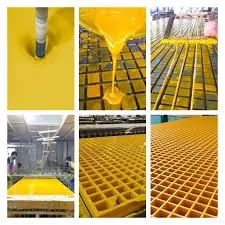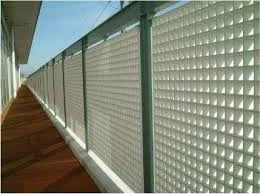
-
 Afrikaans
Afrikaans -
 Albanian
Albanian -
 Amharic
Amharic -
 Arabic
Arabic -
 Armenian
Armenian -
 Azerbaijani
Azerbaijani -
 Basque
Basque -
 Belarusian
Belarusian -
 Bengali
Bengali -
 Bosnian
Bosnian -
 Bulgarian
Bulgarian -
 Catalan
Catalan -
 Cebuano
Cebuano -
 China
China -
 China (Taiwan)
China (Taiwan) -
 Corsican
Corsican -
 Croatian
Croatian -
 Czech
Czech -
 Danish
Danish -
 Dutch
Dutch -
 English
English -
 Esperanto
Esperanto -
 Estonian
Estonian -
 Finnish
Finnish -
 French
French -
 Frisian
Frisian -
 Galician
Galician -
 Georgian
Georgian -
 German
German -
 Greek
Greek -
 Gujarati
Gujarati -
 Haitian Creole
Haitian Creole -
 hausa
hausa -
 hawaiian
hawaiian -
 Hebrew
Hebrew -
 Hindi
Hindi -
 Miao
Miao -
 Hungarian
Hungarian -
 Icelandic
Icelandic -
 igbo
igbo -
 Indonesian
Indonesian -
 irish
irish -
 Italian
Italian -
 Japanese
Japanese -
 Javanese
Javanese -
 Kannada
Kannada -
 kazakh
kazakh -
 Khmer
Khmer -
 Rwandese
Rwandese -
 Korean
Korean -
 Kurdish
Kurdish -
 Kyrgyz
Kyrgyz -
 Lao
Lao -
 Latin
Latin -
 Latvian
Latvian -
 Lithuanian
Lithuanian -
 Luxembourgish
Luxembourgish -
 Macedonian
Macedonian -
 Malgashi
Malgashi -
 Malay
Malay -
 Malayalam
Malayalam -
 Maltese
Maltese -
 Maori
Maori -
 Marathi
Marathi -
 Mongolian
Mongolian -
 Myanmar
Myanmar -
 Nepali
Nepali -
 Norwegian
Norwegian -
 Norwegian
Norwegian -
 Occitan
Occitan -
 Pashto
Pashto -
 Persian
Persian -
 Polish
Polish -
 Portuguese
Portuguese -
 Punjabi
Punjabi -
 Romanian
Romanian -
 Russian
Russian -
 Samoan
Samoan -
 Scottish Gaelic
Scottish Gaelic -
 Serbian
Serbian -
 Sesotho
Sesotho -
 Shona
Shona -
 Sindhi
Sindhi -
 Sinhala
Sinhala -
 Slovak
Slovak -
 Slovenian
Slovenian -
 Somali
Somali -
 Spanish
Spanish -
 Sundanese
Sundanese -
 Swahili
Swahili -
 Swedish
Swedish -
 Tagalog
Tagalog -
 Tajik
Tajik -
 Tamil
Tamil -
 Tatar
Tatar -
 Telugu
Telugu -
 Thai
Thai -
 Turkish
Turkish -
 Turkmen
Turkmen -
 Ukrainian
Ukrainian -
 Urdu
Urdu -
 Uighur
Uighur -
 Uzbek
Uzbek -
 Vietnamese
Vietnamese -
 Welsh
Welsh -
 Bantu
Bantu -
 Yiddish
Yiddish -
 Yoruba
Yoruba -
 Zulu
Zulu
Jan . 20, 2025 15:41
Back to list
Duct System
When it comes to creating efficient water management systems, fiberglass weirs have become a pivotal component thanks to their exceptional durability, flexibility, and resistance to environmental elements. Made from reinforced composite materials, fiberglass weirs stand out due to their robust properties. This sets them apart from traditional materials like concrete and steel, which are susceptible to wear over time.
In terms of design flexibility, fiberglass weirs offer a wide array of possibilities. Manufacturers have the capability to produce weirs of various shapes and sizes tailored to specific project requirements. This adaptability allows engineers to address unique challenges, such as designing weirs for sites with irregular flow patterns or installation areas with limited access. Expert users of fiberglass weirs attest to their superior performance in prolonged applications. Fiberglass remains unaffected by biological growth, a common problem in aquatic installations. This feature ensures that over time, performance remains steady and system efficiency does not degrade. Consequently, industries dealing with aquatic life conservation or irrigation can rely on these weirs for consistent results. Authored by seasoned engineers specializing in material sciences, extensive research has corroborated the superior life span and reliability of fiberglass weirs. Academic publications support the fact that fiberglass materials maintain their physical and chemical properties even under extreme conditions, underscoring their credibility for long-term projects. Trust in fiberglass weir applications stems not only from empirical data but also from the myriad testimonials from professionals in multiple sectors. Water resource management experts frequently share their successful implementation stories, enhancing the perceived value and dependability of these materials. For any entity considering the adoption of fiberglass weirs, the decision translates to investing in a future-proof solution that aligns with both environmental and economic goals. Fiberglass weirs promise a seamless integration with existing structures while offering a modern solution that is prepared to meet the challenges of tomorrow. They demonstrably enhance system efficiency, cut costs, and uphold sustainability, making them a preferred choice across diverse water management applications.


In terms of design flexibility, fiberglass weirs offer a wide array of possibilities. Manufacturers have the capability to produce weirs of various shapes and sizes tailored to specific project requirements. This adaptability allows engineers to address unique challenges, such as designing weirs for sites with irregular flow patterns or installation areas with limited access. Expert users of fiberglass weirs attest to their superior performance in prolonged applications. Fiberglass remains unaffected by biological growth, a common problem in aquatic installations. This feature ensures that over time, performance remains steady and system efficiency does not degrade. Consequently, industries dealing with aquatic life conservation or irrigation can rely on these weirs for consistent results. Authored by seasoned engineers specializing in material sciences, extensive research has corroborated the superior life span and reliability of fiberglass weirs. Academic publications support the fact that fiberglass materials maintain their physical and chemical properties even under extreme conditions, underscoring their credibility for long-term projects. Trust in fiberglass weir applications stems not only from empirical data but also from the myriad testimonials from professionals in multiple sectors. Water resource management experts frequently share their successful implementation stories, enhancing the perceived value and dependability of these materials. For any entity considering the adoption of fiberglass weirs, the decision translates to investing in a future-proof solution that aligns with both environmental and economic goals. Fiberglass weirs promise a seamless integration with existing structures while offering a modern solution that is prepared to meet the challenges of tomorrow. They demonstrably enhance system efficiency, cut costs, and uphold sustainability, making them a preferred choice across diverse water management applications.
Next:
Related Products
Latest news
-
Exploring the Benefits of Top Hammer Drifter Rods for Enhanced Drilling PerformanceNewsJun.10,2025
-
High-Precision Fiberglass Winding Machine for GRP/FRP Pipe Production – Reliable & Efficient SolutionsNewsJun.10,2025
-
FRP Pipes & Fittings for Shipbuilding - Corrosion-Resistant & LightweightNewsJun.09,2025
-
Premium FRP Flooring Solutions Durable & Slip-ResistantNewsJun.09,2025
-
Premium Fiberglass Rectangular Tanks Durable & Lightweight SolutionNewsJun.09,2025
-
Tapered Drill String Design Guide Durable Performance & UsesNewsJun.09,2025









